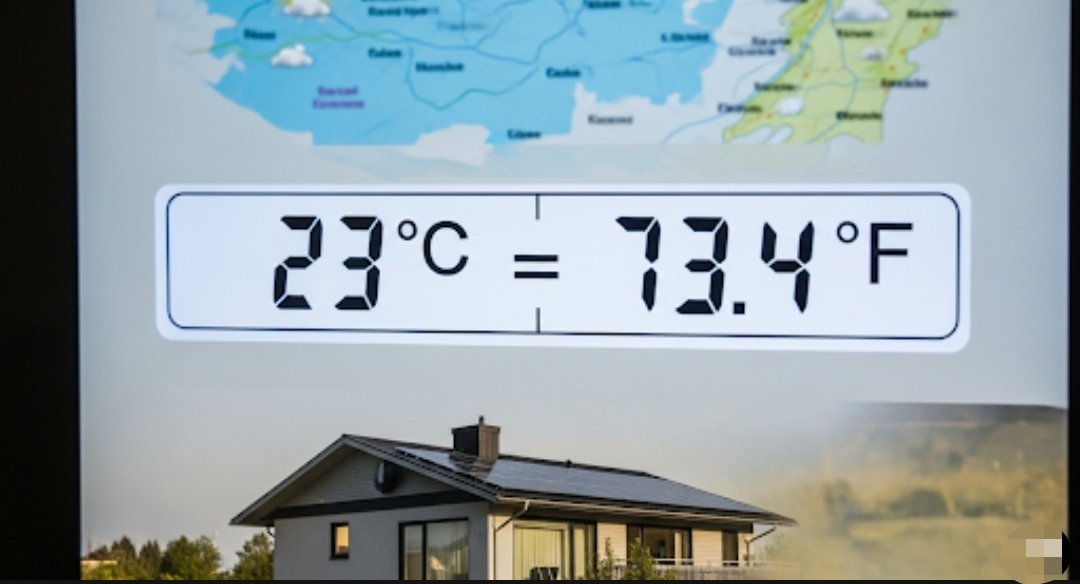What Is 23 C in F? Everything You Need to Know About Celsius to Fahrenheit Conversion
Have you ever found yourself asking, “What is 23 C in F?” Whether you’re traveling abroad, adjusting your thermostat, or simply curious about the temperature outside, knowing how to convert Celsius to Fahrenheit is incredibly useful. This article will break it down for you in the simplest terms possible and provide real-world context so you’ll never be confused again.
Understanding the Basics of Temperature Conversion
Before we answer the question — what is 23 C in F — let’s cover a bit of background.
The Celsius scale is used predominantly around the world, especially in Europe and most parts of Asia. On the other hand, the Fahrenheit scale is most commonly used in the United States. Because of this, it’s common to need a quick conversion to understand temperature in a way that feels familiar.
To convert from Celsius to Fahrenheit, you use this formula:
Fahrenheit (F) = (Celsius × 9/5) + 32
So, let’s apply it to our keyword of interest.
So, What Is 23 C in F?
Using the formula:
(23 × 9/5) + 32 = 73.4°F
That means 23 C in F is 73.4 degrees Fahrenheit.
This temperature is quite pleasant. In fact, 73.4°F is often considered ideal room temperature for many people. It’s warm enough to feel comfortable but not so hot that it becomes uncomfortable or sticky.
Why This Temperature Matters in Real Life
When someone searches for 23 C in F, they’re usually trying to get a quick idea of the weather or set their thermostat correctly. Here are a few everyday scenarios where this conversion can help:
- Traveling Abroad: Imagine you’re visiting Italy and the weather forecast says it’ll be 23°C tomorrow. Knowing that this is 73.4°F helps you pack accordingly.
- Cooking Instructions: Some international recipes list oven temperatures in Celsius. Converting 23 C in F could help you avoid undercooking or overcooking your meal.
- Setting Thermostats: Many modern thermostats allow you to switch between Celsius and Fahrenheit. If you want your room to stay around 73°F, set it to about 23°C.
Easy Tips for Quick Conversion
While it’s always best to use a calculator or Google for precise conversions, here are a few tips for doing rough mental math:
- Multiply the Celsius temperature by 2.
- Add 30.
So for 23 C in F:
23 × 2 = 46
46 + 30 = 76
This gives you an estimate of 76°F, which is slightly higher than the actual 73.4°F — but close enough for a quick, on-the-go guess.
23 C in F Compared to Other Common Temperatures
Let’s put 23 C in F into perspective by comparing it with other everyday temperatures:
- 0°C (32°F) – Freezing point of water
- 10°C (50°F) – Crisp, cool weather
- 23°C (73.4°F) – Perfect spring or fall day
- 30°C (86°F) – Typical summer day
- 37°C (98.6°F) – Human body temperature
Clearly, 23 C in F represents a temperature that feels just right—pleasant for outdoor walks, open windows, or light sweaters.
Fun Fact: The History Behind the Temperature Scales
The Fahrenheit scale was developed by Daniel Gabriel Fahrenheit in 1724. He based the zero point on the lowest temperature he could achieve using a mixture of ice and salt. Meanwhile, Anders Celsius introduced his scale in 1742, using the freezing and boiling points of water as key reference points.
Both scales serve their purposes, but the world continues to use them differently depending on region and context.
Final Thoughts on 23 C in F
The next time you check the weather, read a recipe, or adjust your thermostat, you’ll know exactly what 23 C in F means—73.4 degrees Fahrenheit. It’s a warm, inviting temperature that most people find very comfortable. Whether you’re in Europe, the U.S., or anywhere in between, being able to convert temperatures helps you better understand your environment.
To recap:
✅ 23 C = 73.4°F
✅ Comfortable, mild weather
✅ Easy to convert using (C × 9/5) + 32
So the next time someone asks, “What is 23 C in F?”—you can confidently say it’s a beautiful day!




